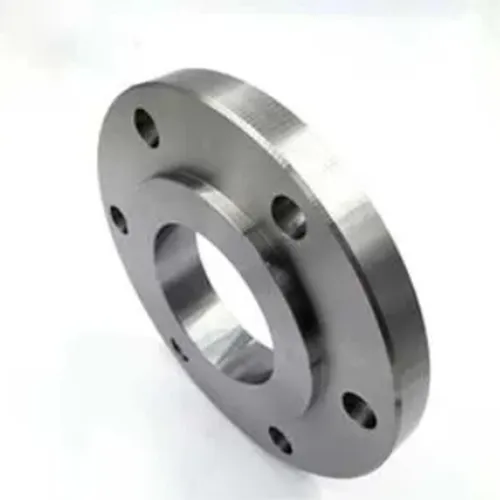-
Cangzhou Yulong Steel Co., Ltd.
-
Phone:
+86 13303177267 -
Email:
admin@ylsteelfittings.com
- English
- Arabic
- Italian
- Spanish
- Portuguese
- German
- kazakh
- Persian
- Greek
- French
- Russian
- Polish
- Thai
- Indonesian
- Vietnamese
- Zulu
- Korean
- Uzbek
- Hindi
- Serbian
- Malay
- Ukrainian
- Gujarati
- Haitian Creole
- hausa
- hawaiian
- Hebrew
- Miao
- Hungarian
- Icelandic
- igbo
- irish
- Japanese
- Javanese
- Kannada
- Khmer
- Rwandese
- Afrikaans
- Albanian
- Amharic
- Armenian
- Azerbaijani
- Basque
- Belarusian
- Bengali
- Bosnian
- Bulgarian
- Catalan
- Cebuano
- China
- China (Taiwan)
- Corsican
- Croatian
- Czech
- Danish
- Esperanto
- Estonian
- Finnish
- Frisian
- Galician
- Georgian
- Kurdish
- Kyrgyz
- Lao
- Latin
- Latvian
- Lithuanian
- Luxembourgish
- Macedonian
- Malgashi
- Malayalam
- Maltese
- Maori
- Marathi
- Mongolian
- Myanmar
- Nepali
- Norwegian
- Norwegian
- Occitan
- Pashto
- Dutch
- Punjabi
- Romanian
- Samoan
- Scottish Gaelic
- Sesotho
- Shona
- Sindhi
- Sinhala
- Slovak
- Slovenian
- Somali
- Sundanese
- Swahili
- Swedish
- Tagalog
- Tajik
- Tamil
- Tatar
- Telugu
- Turkish
- Turkmen
- Urdu
- Uighur
- Welsh
- Bantu
- Yiddish
- Yoruba

Nov . 10, 2024 10:47 Back to list
Understanding Welded Reducers and Their Applications in Pipe Systems
Understanding Weld Reducers A Comprehensive Overview
In the realm of industrial piping systems, the efficiency and reliability of connections between different pipe sizes are paramount. One essential component that facilitates this functionality is the weld reducer. This article delves into the nature of weld reducers, their applications, advantages, and considerations when selecting the right one for your system.
What is a Weld Reducer?
A weld reducer is a type of fitting used to connect two pipes of different diameters, allowing for a smooth transition from one size to another. It is designed to facilitate a change in the diameter of piping systems while maintaining a consistent flow, reducing the risk of turbulence and pressure drops. Weld reducers are typically fabricated from materials such as stainless steel, carbon steel, or other alloys, depending on the specific requirements of the application.
Types of Weld Reducers
Weld reducers are primarily categorized into two types concentric reducers and eccentric reducers.
1. Concentric Reducers These are characterized by a gradual taper from a larger diameter to a smaller diameter, maintaining a symmetrical shape. They are predominantly used in vertical piping systems, where the fluid flow direction does not change. The design helps to equalize the pressure within the system, making these reducers ideal for applications where a uniform flow is required.
2. Eccentric Reducers In contrast, eccentric reducers feature an asymmetrical design, where one side is flat while the other side has a tapered profile. This design is particularly advantageous in horizontal pipelines as it helps ventilate the system, preventing the accumulation of air pockets. Eccentric reducers are often employed in drainage systems and other applications where maintaining a consistent fluid level is crucial.
Applications of Weld Reducers
Weld reducers find applications in various industries, including oil and gas, chemical processing, water treatment, and HVAC systems. Their versatility makes them suitable for a wide range of environments and purposes
- Oil and Gas In the oil and gas industry, weld reducers are essential for connecting pipelines of different sizes, ensuring efficient transportation of crude oil, natural gas, and other fluids.
- Chemical Processing These reducers are widely used in chemical processing plants to manage the flow of various chemicals safely and efficiently.
- Water Treatment In water treatment facilities, weld reducers facilitate the transition between different pipe sizes, helping to maintain the integrity of the flow system
.- HVAC Systems In heating, ventilation, and air conditioning (HVAC) systems, they are crucial for connecting ducts of varying sizes, optimizing airflow and energy efficiency.
weld reducer

Advantages of Weld Reducers
Utilizing weld reducers offers several advantages
1. Seamless Connections Welded joints provide a robust connection that minimizes the risk of leaks, ensuring the integrity of the piping system.
2. Flow Efficiency By facilitating smooth transitions between pipe sizes, weld reducers help maintain optimal flow rates and reduce turbulence.
3. Durability Made from high-quality materials, weld reducers can withstand high pressures and temperatures, making them suitable for demanding applications.
4. Customization Weld reducers can be fabricated to meet specific sizing and material requirements, providing flexibility for various projects.
Considerations When Selecting Weld Reducers
When choosing the right weld reducer for your system, several factors should be taken into account
- Material Compatibility Ensure that the material of the reducer is compatible with the substances being transported to prevent corrosion or chemical reactions.
- Size and Dimensions Accurate measurements are crucial for ensuring a proper fit between the reducer and the pipes it connects. Consult engineering specifications before making a selection.
- Pressure and Temperature Ratings Consider the operational conditions of the system, including pressure and temperature, to select a reducer that can handle those requirements safely.
- Standards and Certifications Ensure that the weld reducers comply with relevant industry standards and certifications to guarantee quality and safety.
Conclusion
Weld reducers are an integral component of many piping systems, providing essential functionality and versatility for a variety of applications. By understanding their types, applications, advantages, and essential considerations for selection, engineers and technicians can ensure the efficiency and reliability of their piping networks. Whether for industrial, commercial, or residential purposes, the appropriate choice of weld reducer can significantly influence the performance of the entire system.
Latest news
-
ANSI 150P SS304 SO FLANGE
NewsFeb.14,2025
-
ASTM A333GR6 STEEL PIPE
NewsJan.20,2025
-
ANSI B16.5 WELDING NECK FLANGE
NewsJan.15,2026
-
ANSI B16.5 SLIP-ON FLANGE
NewsApr.19,2024
-
SABS 1123 FLANGE
NewsJan.15,2025
-
DIN86044 PLATE FLANGE
NewsApr.19,2024
-
DIN2527 BLIND FLANGE
NewsApr.12,2024
-
JIS B2311 Butt-Welding Fittings LR/SR 45°/90° /180°Seamless/Weld
NewsApr.23,2024











